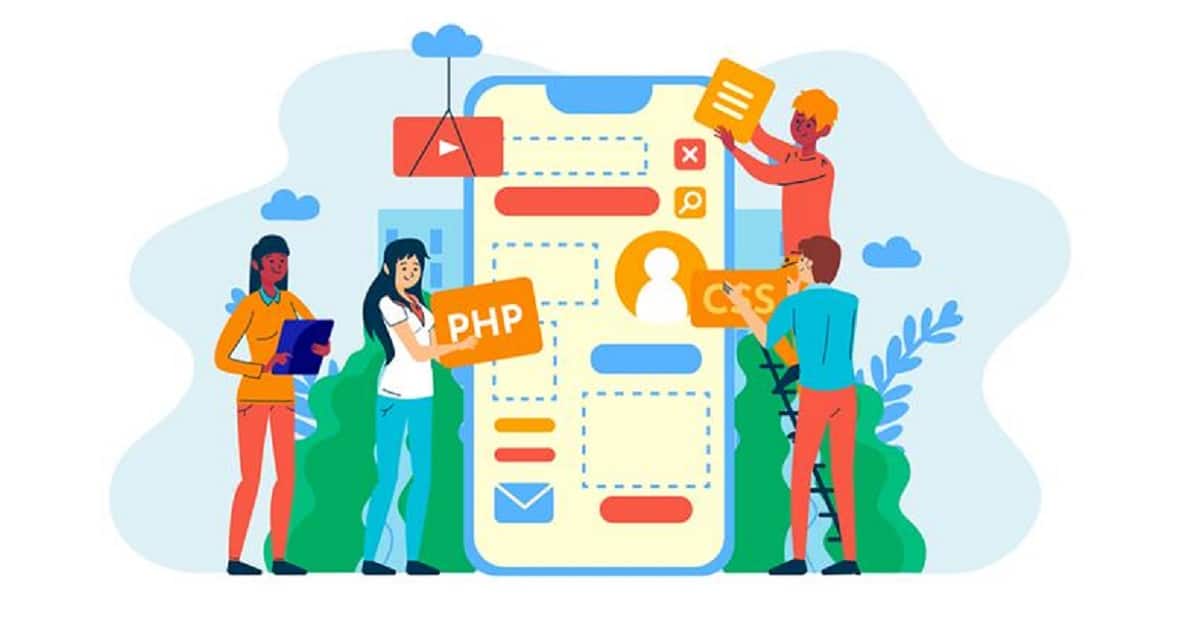Does app-building ever feel like a puzzle with half the pieces missing? You’re definitely not alone. Even seasoned coders hit rough patches without the right backup plan. Plugins swoop in and fill those gaps, almost like adding a turbo booster to your workflow.
One little add-on can handle busy work, so you spend more time on the fun parts, such as dreaming up clever features. Hand the grunt tasks off to a plugin, watch your error log shrink, and feel a genuine lift in your project’s polish.
Speedy coding, fresh tools at your fingertips, and a whole lot less hair-pulling-upside: that’s the plugin promise in a nutshell.
Role of Plugins in Modern App Development
Plugins are like extra toys. You snap onto your toolbox whenever the workbench feels empty. In the world of app-making, these add-ons play nice with your favorite platform and give it fresher moves.
One quick plugin lets a button sling payment across the screen; the other turns typing into neatly aligned forms. Thanks to that mix-and-match magic, you dodge the boredom of copy-pasting code and save your brain for the ideas that really spark.
React Native, Flutter, and even WordPress for the low-code crowd each boast gigantic plugin libraries. A single search can pluck out a ready-made chat window or a slick map, and testing usually takes longer than adding the thing in the first place.
Benefits of Using Plugins for App Development
- Faster Development Process
Building the whole app from the ground up is heroic, but heroes still appreciate shortcuts. A social-media-share plugin slides into the project in minutes, so deadlines wobble less. When repetition vanishes, the clock suddenly feels friendlier instead of fierce.
- Improved Functionality
Think about those long weekend coding marathons you once pulled to ship one small chat box. A ready-made plugin can add that feature in minutes. The same goes for analytics dashboards, push alerts, or almost any bell and whistle you can name. Plugins trim down toil and crank up your app’s speed and smoothness.
- Cost Efficiency
Custom code might cost as much as a brand-new laptop, maybe more once you factor in a pro developing hour. Most plugins either slide in for free or ask for a tiny yearly fee that feels like nothing after payday. For bootstrapping founders, that little difference can keep the lights on another month.
- Scalability
Your user base goes from dozens to thousands overnight, and suddenly, you’re staring at payment gateways and notification queues. Plugins let you slot in those tools one at a time without gutting the entire codebase. Growth feels less scary when the building blocks stretch right alongside the traffic.
Essential Plugin Types for App Developers
Not every add-on is a winner, but a few categories always pay dividends. Know where to look, and you’ll save time hunting.
- UI and UX Enhancers
Sliders, fancy charts, or smooth animations; these goodies let apps look polished even if you’re not a designer. Dropping in a single package can lift the visual vibe and keep users swiping instead of snoozing.
- Security Plugins
Code flaws are bad, but exposed user data is worse. A good security plugin slams the door behind every login, scrambles sensitive info, and scans for shady intruders. It will never replace careful coding, but it sure acts like an extra pair of watchful eyes.
- Analytics and Tracking
Knowing what users click on, where they get stuck, or what they ignore lets you shape a better app. Google Analytics and Firebase plugins pull that information into clean dashboard charts, so the numbers make sense at a glance.
- Performance Optimization
Many of the same add-ons also trim loading times by zipping images, storing bits in local memory, or queuing server calls behind the curtain. Every millisecond shaved off the clock keeps visitors happy and engaged.
- E-commerce Integrations
WooCommerce pre-orders and similar plugins let customers promise to buy a gadget or game before it even ships. That little rush of sales anticipation can pad revenue long before inventory arrives.
How to Choose the Right Plugins for Your App
Not every shiny button belongs in your code. Keep these reality checks in mind:
- Compatibility. Will it break the framework or clash with another add-on? Test first.
- Updates. A plugin that gets no fixes is a ticking time bomb. Pick ones with fresh commits.
- Support Channels. Responsive forums or a quick help desk save hours of frustration.
- User Stars. Scour reviews to catch bugs others already detailed in painful emails.
- Speed Costs. Measure load times once the module is live, and yank it if the lag is brutal.
- Usability. Search for how-to guides before you download; overly complex setups waste valuable dev time.
Research the right plugins before you install them. A few quiet minutes up front can keep your app build from stalling later on.
Top Plugin Recommendations for App Developers
Here are some popular plugins that can greatly benefit your App Development efforts:
- Firebase
Think of Firebase as a Swiss Army knife for small- to medium-sized projects. Its tools for user sign-in, live databases, and push alerts run on both iOS and Android without breaking a sweat.
- OneSignal
If you want push notifications that look sharp every time, OneSignal is an easy add-on. You can queue messages, tag users, and check open rates all from one dashboard.
- Redux Persist (for React Native)
Closing the app shouldn’t wipe out unsaved work, and Redux Persist steps in to fix that. It saves your Redux state to storage so users can pick up where they left off.
- WP REST API (for WordPress-based apps)
When your mobile front-end leans on a WordPress back end, the WP REST API is the bridge that moves posts and images on the fly. Content editors stay in WP while developers work in React Native or Flutter.
- WooCommerce Pre Order
E-commerce shops love this one because customers can pay for a game, gadget, or update before it even exists. Sales numbers climb while you finish production.
Plugins for Testing and Debugging
Bugs hide in plain sight until launch day, so catch them early with these tools. They pay for themselves by saving late nights.
- Sentry: Errors appear in real-time, complete with stack traces and user breadcrumbs. Knowing where a crash happened seconds after it happened is a huge relief.
- Flipper: Visualizing logs, network calls, and layout hierarchies on your laptop makes troubleshooting less of a guessing game. Flipper’s plugins feel like Chrome DevTools but for mobile apps.
- Jest: Simple assertions in .test.js files keep code honest, especially in JavaScript-heavy stacks like React Native. A red dot in the CI pipeline hurts a lot less than a red dot in the App Store.
Keeping your code neat is surprisingly satisfying. Using the right plugins lets you go from a wild experiment to a polished app without breaking a sweat.
Plugins for Automation and CI/CD
Automation isn’t just a buzzword- it’s a time saver dressed in overalls. These plugins can wire up testing, push code, and roll out updates while you grab coffee.
- Bitrise: This CI/CD hero lives in the mobile world. One click, and it runs tests, builds the app, and throws the package where it needs to go.
- Fastlane: If publishing feels like a chore, Fastlane is the robot arm handing you a wrench. It snaps screenshots, tweaks metadata, and taps the big red button on the app stores.
When your team ships update every afternoon, leaning on these tools goes from handy to essential.
Managing Plugins Efficiently
All that power can backfire if you ignore your toolbox—extra plugins pile on overhead like dust in the corners.
- Just the Essentials: Trim plugins that promise everything but collect digital dust. Extra weight only slows down the build.
- Update Regularly: New releases patch holes and boost speed. Skipping updates is like leaving the front door unlocked.
- Test First: A staging server is the seatbelt you put on before the test flight. Run anything new there before blasting it into production.
- Purge the Unneeded: Old tags and forgotten helpers rot line code when no one is looking. Clear them out before they become security holes.
Keep your plugin library tidy, and the app development road stays smooth.
Future of Plugins in App Development
Plugins are about to get a major brain upgrade. Think AI that learns on the fly, voice helpers that actually listen, and tools so mixed with AR or VR that the line between screen and real-life fades.
Low-code and no-code platforms are pulling in folks who never wrote a line of code. That means anyone, from a school teacher to a fitness coach, will soon use ready-made modules to whip up high-powered apps without breaking a sweat.
Expect more niche offerings, too. Custom plugins for hospitals, classrooms, or delivery firms will help teams tackle industry problems head-on, letting them ship working software faster than ever.
Conclusion
Plugins are not just add-ons—they are powerful tools that can transform how you build, manage, and grow your app. One gray box can tack on payment gateways, munch through analytics, or turn a timid feature into full-blown e-commerce. Remember the WooCommerce pre-order plugin? That tiny addition rewrote the whole shopping experience for thousands of shoppers.
A savvy builder picks the right tools, checks the change log now and then, and steers the ship with a steady hand. That habit can stretch from a pocket-sized utility to an online marketplace that has its own Zip Code.
Before launching any new project, hit pause for a moment. Ask, Which plugin will shave hours off my clock and turn what-ifs into done-dids? The answer is usually waiting in an online repository, ready to go.



How to Turn Your Blog Into a Money-Making Machine (Even If You’re Just Starting)
How to Set Role-Based Pricing in WooCommerce (Wholesale & Retail)